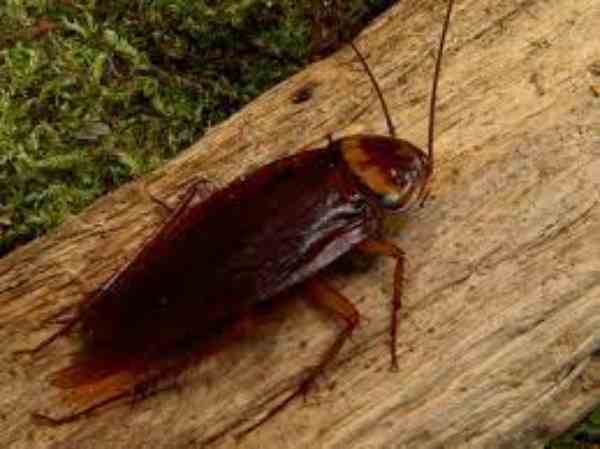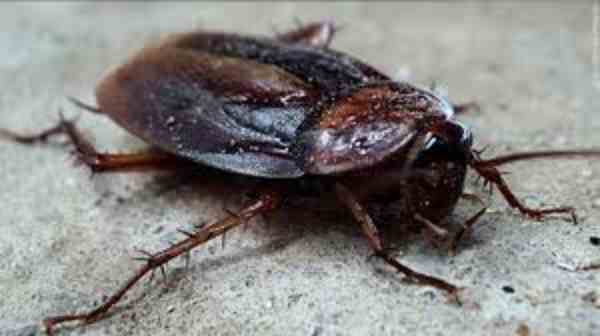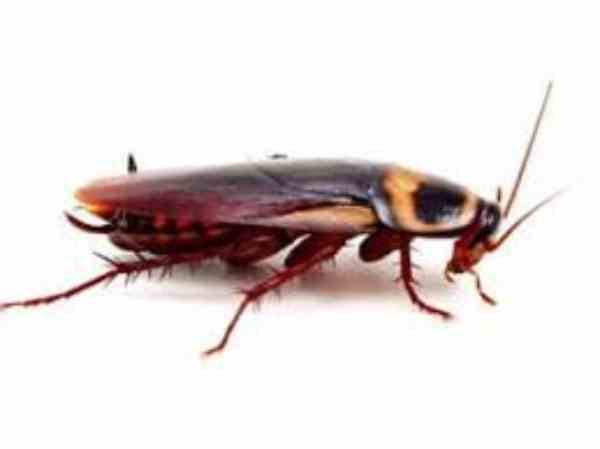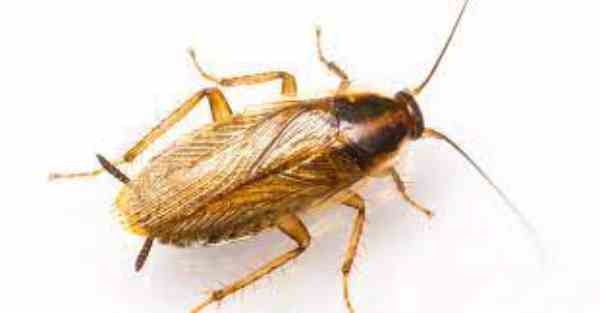Cockroaches are not only unsightly but can also be a major nuisance for homeowners. These resilient insects are infamous for their ability to reproduce rapidly, making early detection of an infestation crucial. Identifying pregnant females is one of the initial signs of a cockroach infestation, although it can be challenging due to their nocturnal habits and tendency to hide in inaccessible areas.
Table of Contents
However, there are a few things to look out for if you suspect that you have a pregnant cockroach on your hands. By identifying the signs of pregnancy early on, you can take action to prevent a full-blown infestation and protect your home from these unwelcome guests. In this article, we’ll discuss the early signs of cockroach pregnancy and what you can do to stop these pests in their tracks.
History Of Cockroaches

Despite their prevalence, the exact origin of cockroaches remains a mystery to researchers. Fossil records of cockroaches are scarce, with only a few specimens dating back to the Carboniferous period, approximately 300 million years ago.
Scientists speculate that cockroaches evolved from a common ancestor that lived during the Carboniferous period. This ancestor was a primitive insect called a blastoid, which shared several similarities with modern-day cockroaches. The high atmospheric oxygen levels during this period likely contributed to the evolution of cockroaches, as they are known for their ability to survive in low-oxygen environments.
Over time, the blastoids diversified into the numerous species of cockroaches we see today. Despite their diversity, all cockroaches share certain characteristics, including their flat, oval-shaped bodies and their swift movements and ability to hide in tight spaces.
Cockroaches have long fascinated scientists and the public due to their remarkable adaptability. Some species can survive for extended periods without food, while others possess the ability to endure high levels of radiation. However, cockroaches are also widely regarded as pests due to their potential to carry disease-causing bacteria and allergens, making their presence in homes and businesses undesirable.
While the exact origins of cockroaches may never be fully known, studying their biology and behaviour can help us develop effective strategies for controlling their populations and mitigating their impact on our lives. Understanding the origins and traits of these resilient creatures may provide valuable insights into managing their populations and minimising their presence in human environments.
Different Species Of Cockroaches
Cockroaches are a remarkable and diverse group of insects, comprising over 4,500 known species. They have a long evolutionary history, dating back over 300 million years, which makes them one of the oldest insect groups on Earth.
Despite their infamous reputation as household pests, many species of cockroaches fulfil important ecological roles in their respective habitats. They serve as decomposers, breaking down organic matter and aiding in nutrient cycling. Additionally, some species act as pollinators, transferring pollen between plants, while others serve as a valuable food source for predators in their ecosystems. Among the fascinating species of cockroaches found worldwide:

The Death’s Head Cockroach (Blaberus craniifer) stands out with its distinct skull-shaped pattern on the thorax. Despite its eerie appearance, this species is not considered a pest and is often kept as a pet.
The American Cockroach (Periplaneta americana) is known for its large size, reaching up to two inches in length, and its reddish-brown colouration. While American cockroaches are frequently encountered as household pests, they also play a crucial role in the wild as decomposers, aiding in the breakdown of dead plants and animals.
The Australian Giant Burrowing Cockroach (Macropanesthia rhinoceros) is one of the largest species of cockroach globally, with some individuals growing up to three inches long. Found in eastern Australia, this species possesses impressive burrowing abilities, delving deep into the ground to feed on decaying plant matter.
The Asian Cockroach (Blattella asahinai) is a relatively recent arrival in North America, first identified in Florida in the 1980s. Similar in appearance to the German cockroach, another common household pest, the Asian cockroach is distinguished by its ability to fly. It is often attracted to outdoor lights at night, where large numbers of them can be found.
These examples represent just a fraction of the incredible diversity of cockroaches worldwide. Despite their negative reputation, it is crucial to recognize the significant roles these insects play in ecosystems and their importance as subjects of study and appreciation.
How Do Cockroaches Mate?

Cockroaches exhibit diverse and efficient reproductive behaviours that contribute to their ability to reproduce rapidly. While there may be variations in mating behaviour among different species, some general patterns can be observed.
Male cockroaches employ visual and chemical cues to locate receptive females. Courtship displays are common, involving behaviours like wing or antennae vibrations or the release of pheromones to attract the female’s attention.
If a female is receptive, she assumes a mating posture, often raising her abdomen to allow the male to mount her. The male utilizes specialized structures on his abdomen called “claspers” to secure himself to the female and transfer spermatophores, which are packets of sperm, to her reproductive tract.
In certain species, the male may stay attached to the female for several hours or even days after mating. This behaviour serves to guard the female against other potential mates, maximizing the likelihood of his sperm fertilizing her eggs.
After receiving sperm from the male, the female stores it in specialized structures called spermathecae. These structures allow the female to use the stored sperm to fertilize her eggs over an extended period, which can span weeks or months. Some species exhibit polyandry, where females mate with multiple males throughout their lives, promoting genetic diversity and increasing the chances of producing healthy offspring.
The mating behaviour of cockroaches demonstrates their complex reproductive strategies and contributes to their successful reproduction. While cockroaches are commonly considered household pests, their adaptability and reproductive behaviours highlight their resilience as a group of insects.
Cockroach Pregnancy: A Background

Cockroach reproduction is indeed a fascinating and intricate process. Female cockroaches possess ovaries that produce eggs, which are fertilized by male cockroaches during copulation. Once fertilized, the eggs are deposited in an ootheca, a protective capsule that shields them until they hatch.
The duration of the gestation period varies among cockroach species but typically spans several weeks. After this period, the eggs hatch, giving rise to nymphs, which are the immature stages of cockroaches. Nymphs undergo multiple moulting stages as they grow, shedding their exoskeletons and developing new ones. This process allows them to accommodate their increasing size until they reach adulthood.
Cockroaches are renowned for their reproductive prowess, and certain species can produce numerous offspring over their lifespan. This high reproductive capacity can lead to infestations that are challenging to control and can pose health risks, as cockroaches are known carriers of disease-causing organisms.
Efforts to manage cockroach populations often involve a combination of prevention measures, such as maintaining cleanliness and eliminating food and water sources, as well as targeted pest control methods. Understanding the reproductive capabilities of cockroaches is crucial in developing effective strategies to mitigate infestations and reduce the associated health risks.
Early Signs Of Cockroach Pregnancy: What To Look For!
If you suspect the presence of a pregnant cockroach in your home, there are several signs you can look out for
Physical Changes in Appearance: A noticeable sign of cockroach pregnancy is a visibly swollen abdomen. As the female carries eggs, her abdomen becomes larger and more rounded. Some species may also exhibit distinctive markings on their abdomens that become more pronounced during pregnancy.
Behavioural Changes: Pregnant cockroaches often exhibit behavioural changes compared to non-pregnant individuals. They may decrease their activity levels to conserve energy for the growth and development of their eggs. Pregnant cockroaches tend to seek out dark and secluded areas where they can protect their eggs from potential threats. Additionally, they may become more defensive and aggressive when their territory is disturbed.

Changes in Appetite: Pregnant cockroaches require more energy to support the development of their eggs. This increased energy demand may result in an increase in appetite as the cockroach actively seeks out food sources to fuel both her body and her developing offspring.
Changes in Activity Level: Pregnant cockroaches may display decreased activity levels. They may become more sedentary and less active compared to non-pregnant individuals. This change in behaviour can make it easier to spot pregnant cockroaches, as they may be more likely to remain in one place for extended periods.
If you observe these signs, it is essential to take appropriate measures to address the infestation promptly. Consult with a pest control professional or implement effective pest management strategies to minimize the potential risks associated with cockroach infestations.
Prevention And Control Of Cockroach Infestations
Preventative measures are indeed crucial in controlling cockroach populations. By following these steps, you can effectively prevent infestations:
Maintain Cleanliness: Regularly clean your home or building, wipe down surfaces, and remove food debris that can attract cockroaches. Store food in airtight containers to prevent access.
Seal Cracks and Crevices: Use caulk or weatherstripping to seal any cracks or gaps around windows, doors, and walls. Pay attention to areas where cockroaches can enter, as they can squeeze through tiny openings.
Remove Sources of Water: Cockroaches need water to survive, so eliminate any standing water and repair leaky pipes or faucets.
Control Measures: If an infestation is present, consider using control measures such as bait stations, insecticides, or cockroach traps. Follow the instructions provided and use caution when handling chemicals.
Work with a Pest Control Professional: For severe or persistent infestations, it is advisable to consult with a pest control professional. They can assess the situation, identify the source of the infestation, and develop a customized treatment plan. They can also provide guidance on prevention measures to avoid future infestations.
Working with a professional ensures that the infestation is effectively controlled and that appropriate measures are taken for long-term prevention. They have the expertise and tools to handle infestations safely and effectively.
By implementing preventative measures, using control measures when needed, and seeking professional assistance if necessary, you can effectively prevent cockroach infestations, protect your health and maintain the integrity of your property.
If You Kill A Pregnant Cockroach, What Could Happen?
Cockroaches do not give birth to live young, instead, they lay eggs, and if interrupted during pregnancy, the eggs may be released. Although killing a cockroach in the early stages of pregnancy may not have a significant impact on its reproductive cycle, killing a cockroach close to laying its eggs could lead to a breeding ground for these pesky insects. As a homeowner or business owner, it’s important to understand the biology of cockroaches and take preventative measures to avoid an infestation.
Can Cockroaches Lay Eggs When They Are Killed?

When a female cockroach is ready to lay eggs, she actively searches for a safe and secure location. Cockroaches are highly adaptable and can choose a variety of suitable environments to deposit their eggs.
Once a suitable spot is found, the female cockroach will lay an egg case, also known as an ootheca. The ootheca typically contains multiple eggs. To protect the eggs from predators and environmental factors, the female will often glue or cement the egg case to a surface.
It is important to note that a female cockroach does not continue to deposit eggs in the same egg case. Instead, she creates a new ootheca for each batch of eggs. Some cockroach species have the ability to produce multiple oothecae throughout their lifetime, with each ootheca containing numerous eggs.
If a pregnant cockroach is killed before laying her eggs, the eggs inside her will not be laid and will not develop into nymphs. However, if the female had already deposited an ootheca before her demise, the eggs inside the ootheca can still hatch into nymphs, even in the absence of the female.
Understanding the reproductive behaviour of cockroaches, including their egg-laying habits, is crucial for effective pest control and preventing infestations. By targeting and eliminating egg cases, it is possible to disrupt the reproductive cycle and control cockroach populations more effectively.
Do Cockroaches Give Birth When They Die?
It is worth noting that cockroaches do not reproduce upon death. As mentioned earlier, cockroaches lay their eggs in concealed and secure areas, and these fertilized eggs will eventually hatch into nymphs.
Additionally, it is important to mention that cockroaches have a high capacity for reproduction. A female cockroach can lay 10 to 40 eggs at once, and a single egg case can hold up to 50 eggs. Cockroaches have a short reproductive cycle, with certain species capable of producing multiple generations within a year.
If a cockroach infestation is not dealt with, it can quickly become a significant issue, as their populations can grow excessively. This can lead to health risks, as cockroaches are carriers of diseases and allergens. Their droppings and shed skin can also trigger asthma and allergies.
To effectively manage and prevent cockroach infestations, it is crucial to address the underlying cause of the problem. This involves eliminating sources of food and water, sealing entry points, and implementing regular pest control measures. Seeking advice from a licensed pest control professional can provide the most effective strategies for preventing and controlling cockroach infestations.

Cockroach Vs. Palmetto Bug
Let’s explore if there is a distinction between a cockroach and a palmetto bug. Although these terms are sometimes used interchangeably, there is a subtle difference between them. The term “palmetto bug” is mainly employed to refer to the American cockroach, a large species commonly found in the southeastern region of the United States. These insects can reach a length of up to 2 inches and possess reddish-brown wings, although they rarely utilize them for flying.
On the other hand, “cockroach” is a general term encompassing several species of insects belonging to the order Blattodea. These insects exhibit diverse shapes, sizes, and colours, but they share a few common characteristics: they are scavengers and once they infest a space, they are difficult to eradicate.
Therefore, while “palmetto bug” and “cockroach” are often used interchangeably, the term “palmetto bug” primarily serves as a regional name for the American cockroach in the southeastern United States. Regardless of the terminology used, one thing remains certain: you wouldn’t want these unsettling creatures scuttling around your home!
Conclusion on Early Signs Of Cockroach Pregnancy
Key Points
- Cockroaches are prevalent pests in households, and if not dealt with promptly, they can become a significant issue. These insects are recognized for their resilience and rapid reproductive abilities, underscoring the importance of early detection and intervention when signs of infestation arise.
- Scientists theorize that cockroaches originated from a shared ancestor over 300 million years ago, during the Carboniferous period.
- To deter cockroaches, it is crucial to maintain cleanliness by regularly wiping down surfaces and storing food in airtight containers. This helps eliminate food debris that attracts these pests.
- It is worth noting that cockroaches do not give birth upon death. As mentioned earlier, cockroaches lay their eggs in concealed and secure locations, and these fertilized eggs will eventually hatch into nymphs.
- By observing physical and behavioural changes in cockroaches, measures can be taken to prevent infestations, as these insects are carriers of bacteria and allergens that can trigger respiratory problems, including asthma.
FAQs
Do cockroaches have a placenta?
Instead, female cockroaches have a specialized reproductive system that allows them to lay eggs containing their offspring. Cockroaches have a unique way of parenting their young, which involves laying the eggs in a protected area with the right conditions for their hatchlings to thrive.
How do you get rid of cockroach eggs?
One of the most effective methods to get rid of cockroach eggs is through thorough cleaning and sanitation. Cockroaches tend to lay their eggs in dirty and cluttered areas, so make sure to keep your living space clean and tidy.
Additionally, insecticide sprays and baits can also work effectively in killing cockroach eggs, but they must be used with caution as they can be harmful if not handled properly.
How long do cockroaches live?
These creepy crawlies are a common sight in households, particularly in warm and humid climates. If you’re dealing with a cockroach infestation, you might be wondering how long these pests can last. On average, cockroaches can live anywhere from several months to a year, depending on the species and environmental conditions. However, the lifespan of a cockroach can vary greatly, with some species living only a few weeks, while others can survive for several years.
Final Words
Keeping cockroaches out of the home is a top priority for many homeowners, and identifying the early signs of pregnancy in these pesky critters is essential for preventing and controlling infestations. These insects are notorious for carrying bacteria and allergens that can trigger asthma and other respiratory problems, so it’s crucial to observe any physical and behavioural changes that may indicate cockroach pregnancy.
By doing so, steps can be taken to avoid infestations from occurring and keep your home healthy and safe. With proper attention and care, you can effectively control pest populations and prevent their harmful impact on your family’s health.
Reference:
- https://pestech.com/online-guides/cockroaches/cockroach-life-cycle
- https://www.ncbi.nlm.nih.gov/pmc/articles/PMC6787804/
- https://www.aaipest.com/pest-control-blog/2524/
A motivated philosophy graduate and student of wildlife conservation with a deep interest in human-wildlife relationships, including wildlife communication, environmental education, and conservation anthropology. Offers strong interpersonal, research, writing, and creativity skills.










